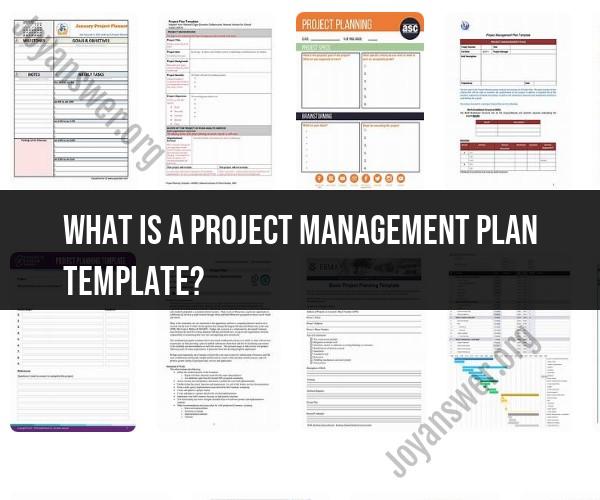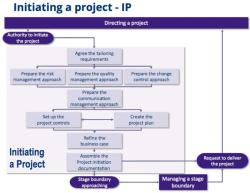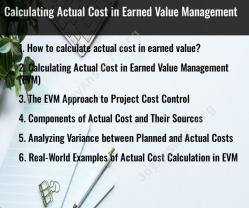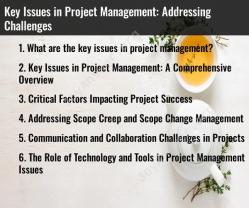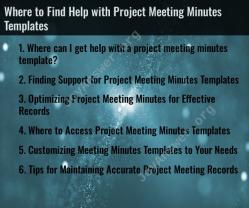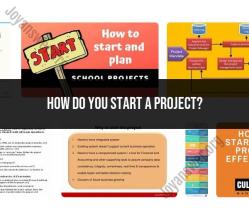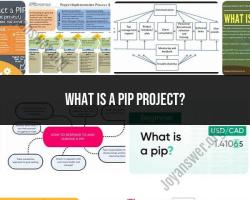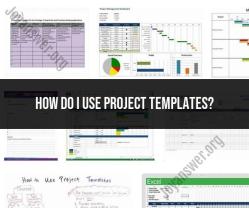What is a project management plan template?
A Project Management Plan (PMP) template is a structured document that serves as a framework for planning, executing, monitoring, and controlling a project from start to finish. It outlines the key components and processes necessary for successful project management. A well-crafted PMP template provides a roadmap that helps project managers and teams achieve project objectives within scope, on time, and within budget.
Here are the key elements typically included in a Project Management Plan template:
Project Overview:
- A brief introduction that provides an overview of the project, including its purpose, objectives, scope, and stakeholders.
Project Scope Statement:
- A detailed description of the project's scope, including deliverables, milestones, assumptions, and constraints.
Project Objectives and Success Criteria:
- Clear and measurable project objectives and criteria for success. These should align with the project's purpose and provide a basis for evaluation.
Project Organization and Roles:
- A description of the project organization structure, including the roles and responsibilities of team members, stakeholders, and key decision-makers.
Project Schedule:
- A timeline that outlines the project's major phases, tasks, milestones, and dependencies. It may include a Gantt chart or project schedule diagram.
Resource Management:
- Details on how project resources (human, financial, equipment, etc.) will be allocated, managed, and monitored throughout the project's life cycle.
Risk Management:
- Identification of potential project risks, assessment of their impact and likelihood, and strategies for mitigating or managing them.
Quality Management:
- Procedures and standards for ensuring the quality of project deliverables, including quality assurance and quality control processes.
Communication Plan:
- A plan that outlines how project communication will be managed, including stakeholders, frequency, methods, and reporting mechanisms.
Change Management:
- Procedures for handling changes to the project scope, schedule, or budget, including change request processes and approval mechanisms.
Issue Management:
- Processes for identifying, tracking, and resolving project issues or problems as they arise during the project's execution.
Cost Management:
- Estimations of project costs, budget allocation, cost control measures, and financial reporting.
Procurement Management:
- Details on how procurement activities, including vendor selection, contracts, and supplier management, will be handled if applicable.
Stakeholder Engagement:
- Strategies for identifying, analyzing, and engaging with project stakeholders to ensure their needs and expectations are met.
Closure Criteria:
- Criteria and procedures for formally closing out the project, including handover, final reports, and documentation.
Appendices and Supporting Documents:
- Any additional documents, templates, or reference materials relevant to the project.
A Project Management Plan template serves as a valuable tool for project managers and teams to document and communicate their approach to project management. It provides clarity, structure, and a shared understanding of how the project will be executed and controlled. Customizing the template to fit the specific needs of the project is essential for its effectiveness.
Project Management Plan Template: An Overview
A project management plan (PMP) is a document that outlines the steps and procedures that will be used to manage a project. It is an important tool for ensuring that projects are completed on time, within budget, and to the required quality standards.
A PMP template can be a helpful starting point for developing your own plan. However, it is important to customize the template to meet the specific needs of your project.
Components and Structure of a Project Management Plan
A typical PMP will include the following sections:
- Introduction: This section should provide a brief overview of the project, including its goals, scope, and objectives.
- Project team: This section should identify the key members of the project team and their roles and responsibilities.
- Schedule: This section should outline the project schedule, including key milestones and deadlines.
- Budget: This section should estimate the total cost of the project.
- Risk management plan: This section should identify the potential risks to the project and outline mitigation strategies.
- Communication plan: This section should outline how the project team will communicate with each other and with stakeholders.
- Quality management plan: This section should outline how the project team will ensure that the project meets the required quality standards.
Crafting an Effective Project Management Plan: A Step-by-Step Guide
Here is a step-by-step guide to crafting an effective project management plan:
- Define the project goals and scope. What are you trying to achieve with the project? What are the deliverables?
- Identify the key stakeholders. Who has an interest in the project? Who will be affected by the project?
- Assemble the project team. Who are the people who need to be involved in the project? What are their skills and experience?
- Develop the project schedule. When will the project start and finish? What are the key milestones and deadlines?
- Estimate the project budget. How much will the project cost? What are the sources of funding?
- Identify and assess the risks. What are the potential risks to the project? What are the mitigation strategies?
- Develop a communication plan. How will the project team communicate with each other and with stakeholders?
- Develop a quality management plan. How will the project team ensure that the project meets the required quality standards?
- Review and approve the PMP. Once the PMP is developed, it should be reviewed and approved by the key stakeholders.
By following these steps, you can develop an effective project management plan that will help you to achieve your project goals.
Here are some additional tips for crafting an effective PMP:
- Be specific and realistic in your goals and objectives.
- Break down the project into smaller, more manageable tasks.
- Estimate the time and resources required for each task.
- Identify and mitigate potential risks.
- Communicate regularly with stakeholders.
- Monitor the project progress and make adjustments as needed.
By following these tips, you can increase your chances of success in completing your project on time, within budget, and to the required quality standards.
